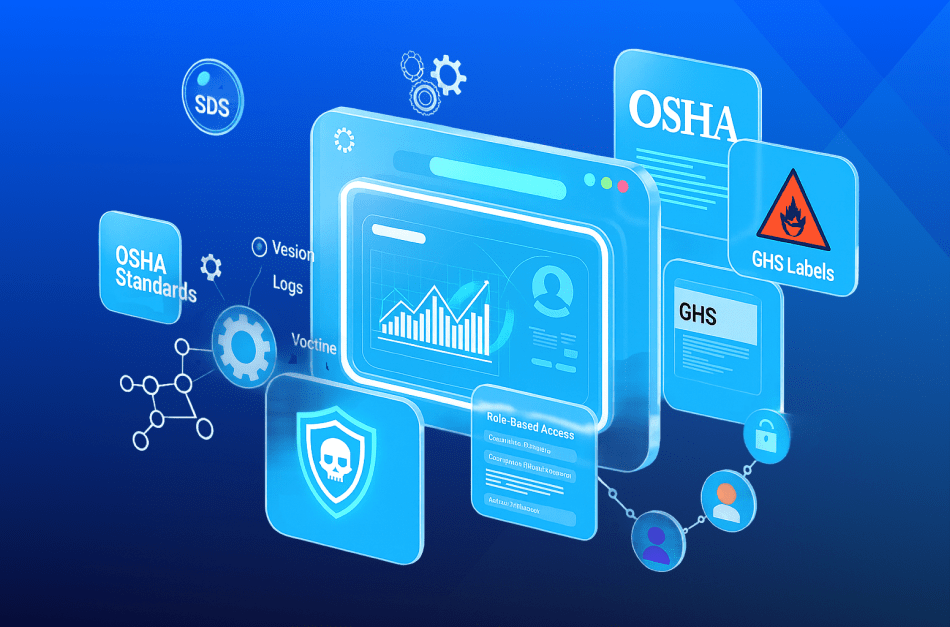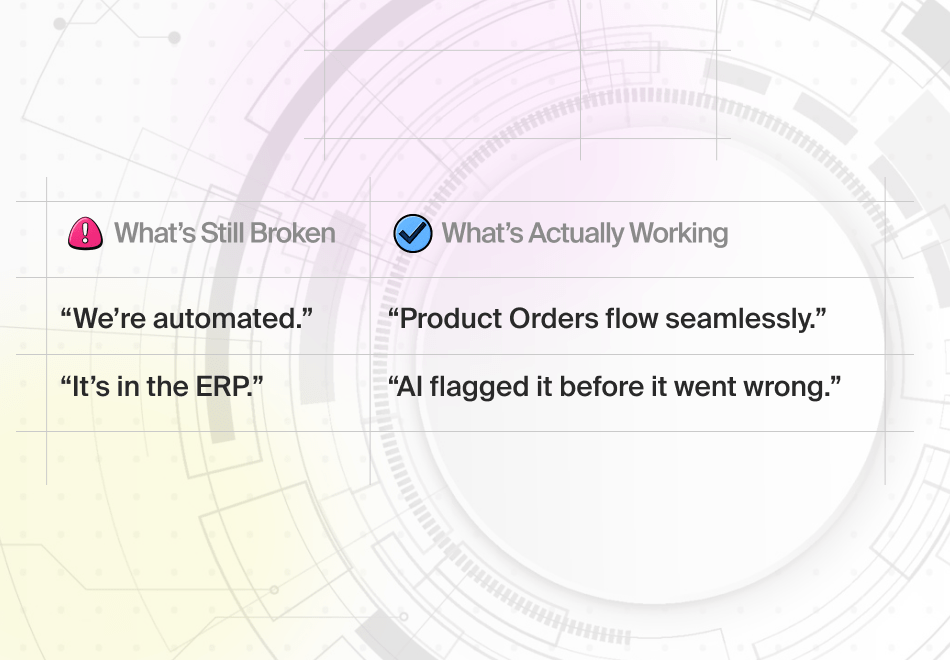At a Glance
The top enterprise application companies in terms of market share are:
- SAP: 8.05%
- Microsoft 7.18%
- Oracle: 5.6%
- Salesforce: 3.48%
- IBM: 2.51%
Towards the end of 2020, Microsoft reported 258 million monthly active business users. Today, 1.2 billion people in 140 countries speaking 107 languages use a Microsoft product.
Introduction
Very few businesses decide, “today is the day we shrink.” Instead, most small and medium businesses focus their attention and resources on growing their market share or expanding into new markets.
Successful companies use every available tool to get an edge on their competition. This is especially true in a world where the success of a supply chain can rest on a single freighter or a lack of manpower at a key port. All leaders need to do is look at what happened in the Suez Canal and the One part of the problem impacted goods going to Europe, while the other continued to affect products going in and out of the US.
One tool many companies use is enterprise resource planning (ERP) software. The top-tier versions of these products go beyond looking at spreadsheets and mountains of data. One of the world’s most used ERP platforms is Microsoft’s Dynamics 365 line of products, which is used on 73 percent of all computer systems.
Modular Design of Dynamics 365
Figure: 1Microsoft Dynamics 365 modules
Dynamics 365 has been designed as a modular solution with five main sections. Each module has its own unique functions and depending on your company’s needs, one module may be enough.
Dynamics 365 Finance
Dynamics 365 Finance is Microsoft’s flagship ERP that includes artificial intelligence designed to help assess the health of your business, improve financial controls, optimize cash flow, and make strategic decisions faster. The result is driving growth by using real-time, unified global financial reporting, embedded analytics, and predictive insights.
Dynamics 365 Supply Chain Management
Dynamics 365 Supply Chain Management is designed to accelerate inbound and outbound processes such as put-away and pick-pack-ship, and identify potential machine issues before they occur.
Dynamics 365 Business Central
Dynamics 365 Business Central can manage all core business functions and help deliver projects on time and under budget.
Dynamics 365 Sales
Dynamics 365 Sales is designed to improve responses, conversions and win rates, helping you provide more personalized, meaningful engagement. It also helps examine your sales data, delivering insights with the power of AI.
Dynamics 365 Marketing
Dynamics 365 Marketing creates seamless customer experiences through marketing automation, shared data and business processes connected to Dynamics 365 Sales. It increases lead generation.
Preferred solutions like Integrated Chemical Management (iCM) and Integrated Quality Management (iQM)—add insights to pharmaceutical and chemical manufacturing companies.
These programs work seamlessly with Azure, Microsoft’s cloud computing platform. Azure provides a key link when manufacturing companies want to use the Internet of Things (IoT) and share information across far-flung enterprises.F
D365 Finance: The Heart of Microsoft’s Modern Solutions
Sitting at the core of Microsoft Dynamics 365 builds on the company’s history of creating multi-user accounting software, which began nearly 30 years ago. Dynamics Release 1.0 made its debut in February 1993.
Since its debut as 32-bit software, Dynamics 365 Finance—previously known as Finance and Operations—has grown significantly with the times. Artificial intelligence is now part of its ability to examine financial reporting, analyze data and provide meaningful insights.
For midsize to large companies, the finance module is designed to be used, especially by people who are already familiar with Office products like Outlook and Excel.
Accounting elements of D365 Finance are:
- General ledger, accounts payable, accounts receivable, and bank reconciliation
- Asset management
- Month and year-end closing
- Budgeting and planning
The Finance module also includes management functions covering operations, sales and service, projects, and reporting and analytics.
Get a consultation to learn how Microsoft Dynamics 365 can boost your manufacturing operations.
Automating Payment Processing is Part of D365 Finance
Many companies are adopting D365 Finance because of its ability to efficiently automate payment processing, allowing you to “create a predefined schedule with a combination of payment proposal criteria to create payment journals with less user intervention,” according to MSDynamicsWorld.
Process automation in D365 begins by setting a schedule under Accounts Payable > Setup > Payments > Process Automations.
The most interesting and advanced feature lets you schedule automation across companies (payment journals would be created in respective companies) without changing the company’s day to day activities of using Dynamics 365 Finance,
Users can set up batch jobs, define alerts, set amount limits and include invoices from other companies using the included Centralized Payments option, where filters are easily set.
D365 Finance payment process automation lets you:
- Schedule payment process using different requirements for each day or time of day
- Reduce manual journal creation
- Monitor activity with a dashboard view, which informs you of any errors so you can resolve them
Integrating Finance with Supply Chain Management
Keeping track of your products is critical, especially in today’s highly regulated world. Pharmaceutical and chemical companies are under a microscope in terms of regulations. When it comes to shipping medicines or chemicals, the word “complex” doesn’t come close to managing and meeting these requirements.
One important feature in Supply Chain Management (SCM) is its ability to store information related to hazardous materials. Information on these materials is stored in the Product Information section.
- ADR: Covering the international shipment of dangerous goods by road
- CFR 49: Regulating dangerous goods by road in the US
- IMDG: The International Marine Dangerous Goods code
- IATA: The International Air Transport Association dangerous goods regulations
Handling hazardous materials is a comparatively minor feature in D365 Supply Chain Management, though. Its primary functions relate to inventory management and automating inventory controls.
For example, SCM lets companies create barcode labels for individual products and license plates for pallets and larger shipments. These barcodes can be read by handheld scanners and cellphones letting workers know exactly what is in each container.
In terms of warehouse management, knowing precise quantities of each item allows management to order exactly what it needs. This information management ensures enough materials for production runs without running out of storage space. SCM helps companies walk that fine line between having too little inventory to meet customer needs and tying up funds on extra products. Built-in stock and inventory management functions provide a wealth of data for manufacturing companies.
When dealing with shipping finished goods to customers, SCM’s same labeling and tracking functions, combined with business intelligence, helps route shipments.
Imagine you need to get two pallets from a factory in China to Los Angeles. When shipping by sea, this would normally take about 16 days. That time frame normally works for the product’s 30-day shelf life. However, problems related to Covid-19 mean the delay at the San Pedro docks is now 36 days. When adding Power BI (business intelligence) to your software solution, you are warned about the delay in finding another route.
The Bottom Line
Today’s business world is much different than it used to be. It is running not on gears, widgets and gadgets but big data and mountains of information. Bytes and bits in the form of 0’s and 1s provide insight that today’s organizations rely on to grow. The Microsoft Dynamics 365 line of modular ERP products includes essential information on when it can do its best: before a situation becomes critical.
These robust, modern products offer different functions but share a common goal – helping your company stay competitive in today’s digital world.









